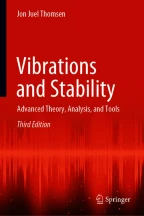
This is a preview of subscription content, log in via an institution to check access.
eBook EUR 71.68 Price includes VAT (France)
Softcover Book EUR 89.66 Price includes VAT (France)
Hardcover Book EUR 126.59 Price includes VAT (France)
Tax calculation will be finalised at checkout
Purchases are for personal use only
Actually \( (EI\varphi^<\prime\prime>)^ <\prime\prime>= \omega^ \rho A\varphi \) leads to \( EI\varphi^ <\prime\prime \prime\prime>+ 2EI^<\prime>\varphi^ <\prime\prime\prime>+ EI^<\prime\prime>\varphi^ <\prime\prime>= \omega^ \rho A\varphi , \) while (2.119) ignores (to keep the example simple) the 2nd and 3rd term of the left-hand-side, which are zero everywhere except at the discontinuous jumps in EI, i.e. at \( x = \tfracl(1 \pm \varepsilon ). \) The consequence of this for the accuracy in results is not obvious. You could compare to exact results, e.g. by Krishnan (1998), and also see Jang and Bert (1989).